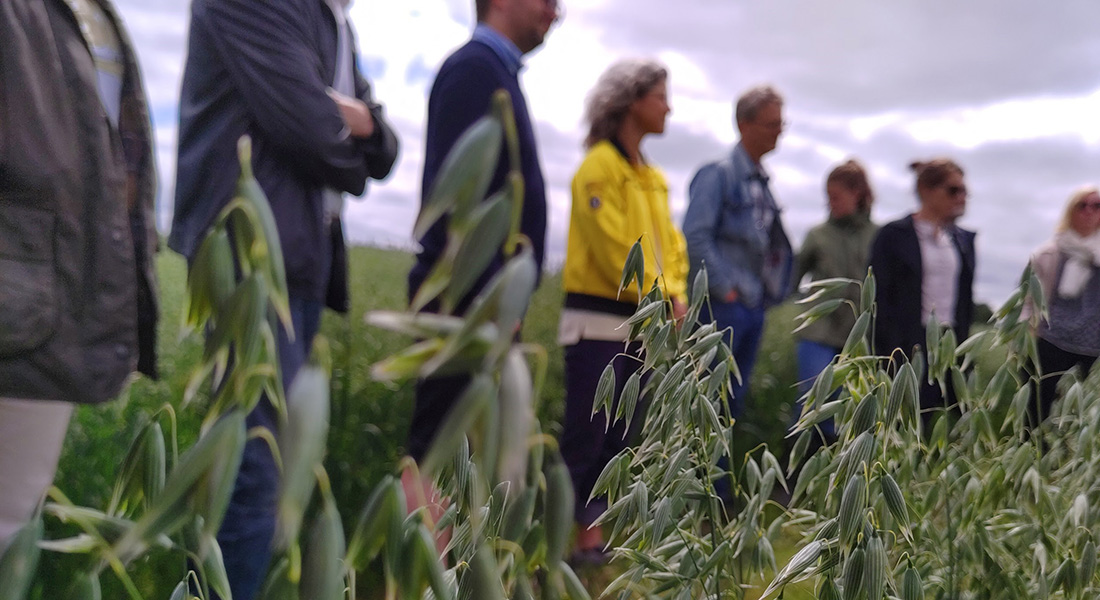Time to harvest the crops that will make vegan beef better
Ten varieties of oat, peas and faba beans for the AQRIFood project are thriving as the harvest time draws near. The following analysis and processing might reveal qualities in each crop that translate into better taste in plant-based foods.

That consumers need tastier ingredients before they switch to a plant-based diet became clear, when coordinator Christian Bugge Henriksen invited some friends over to his home to sample patties made from either ground beef, vegetables or a mix of the two.
The verdict was mixed. While about a third actually preferred a mix of peas and faba beans, the purely pea-based patties performed lowest in the taste test.
“My ambition is that the next time my friends are coming over, they will all prefer the plant-based option,” he said in a recent interview in Jyllands-Posten.
Breeding raw materials better suited for plant-based products
Achieving this ambition requires that the taste and consistency of available plant-based products should improve, and for that, the raw materials must be of a high quality suited for plant-based products. Oats, peas and faba beans are often used as raw materials in plant-based products based on Danish crops, but most of the available varieties have been bred for use in animal feed.
AQRIFood wants to change that. First by identifying which of the existing commercial varieties are best suited for plant-based foods, and then - in subsequent stages of the project - to look at crop breeding, older landraces of the crops, and cropping systems best suited for plant-based food production.

Signs of disease provide useful information
The AQRIFood project is one harvest away from achieving its first goal. In late June 2022, the AQRIFood partners met at Sejet Plant Breeding outside Horsens to discuss the progress in the project - right in the middle of the fields sown with ten varieties of oat, pea and faba bean.
After discussing the progress on the different aspects of the project, the partners went for a field walk headed by the responsible breeders from Sejet. All varieties were growing well in the beautiful field next to the Horsens Fjord, and only small signs of disease were beginning to show in the crops. Obviously, disease in a crop is in general not a good thing, but for the plant breeders it is relevant information used for evaluating the varieties.
The plant-based future not only requires that we grow crops that result in the best taste and functional quality in the finished product, it is also necessary to choose varieties that can handle the constant pressure from diseases and pests.
Now the next step is the harvest – fingers crossed for a good yield!
